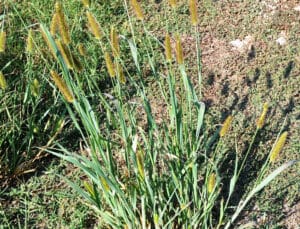Medicago lupulina L.
Description
This species is often found growing in dry, marginal soils with thin turf that has not been fertilized with nitrogen. It tends to grow in a prostrate fashion, forming patches and is most noticeable when flowering during summer.
Life Cycle
Black medic is a member of the legume family (Fabaceae) and is classified as a winter or summer annual. Plants generate deep taproots and crowns produce long, spreading stems that grow prostrate along the soil surface but do not give rise to nodes and roots. This species produces flowers, fruits, and seeds from late spring to early fall. Like other legumes, black medic exists symbiotically with nitrogen-fixing Rhizobium bacteria which form nodules on roots and convert atmospheric nitrogen into a plant-available form.
Identification
Black medic stems are sparsely hairy and grow close to the ground then turn slightly upright, giving rise to yellow flower clusters called inflorescences. Leaves have three oval leaflets (trifoliate arrangement) approximately 1⁄2 to 3⁄4 inch in length and arise alternately on stems. Leaf margins of individual leaflets are smooth at the base and slightly serrated towards the top, with a small spur at the tip. Black medic leaves can be distinguished from other clovers by the extended petiole on the center leaflet. A pair of leaflike stipules can be found at the junction of the main stem and each leaf. Small (1⁄4 to 1⁄2 inch), rounded yellow inflorescences develop on stalks that arise from leaf axils on stems. Each compact inflorescence is composed of multiple individual flowers which are eventually replaced by black seed pods and seeds. Seeds are viable and generate new plants. Flowering occurs throughout the summer months.
Cultural Control
Infestations of black medic can be reduced by improving turf density through fertilization, regular mowing, and use of turfgrasses well-adapted to site conditions. This weed can be suppressed or controlled with various postemergence herbicides, particularly those containing dicamba, MCPP, and/or fluroxypyr





